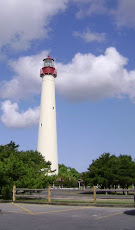
Michele, at Rambling Woods, is hosting Think Green Thursday for us once again. Please visit and read some wonderful suggestions for helping to keep our planet green, and see some beautiful photos.
Years ago, while I was working in the Planning Department of our local municipality, the Planning Director received a publication called Estuary News. It had so many articles of interest to me that I ordered a subscription to this news letter for myself. I recently received the Summer 2009 issue, and would like to share some of it with you.
There is an article written by Laura Whalen concerning Landscaping for Cleaner Water. In it she states that rain water or storm water can be a valuable resource, but it is most often simply drained away. Besides the waste of this water, it is also allowed to become a real threat. Storm water from rooftops, driveways and streets rushes through the pipes into our streams, rivers and bays, eroding the soil, destroying wildlife habitat, causing flooding and polluting the waterways. Ms. Whalen's suggestion for prevention of such problems is creation of rain gardens.
I went as directed to the Low Impact Development Center site, where I found the following definition:

"What is a Rain Garden?
PDFs | Links
A rain garden is a garden which takes advantage of rainfall and stormwater runoff in its design and plant selection. Usually, it is a small garden which is designed to withstand the extremes of moisture and concentrations of nutrients, particularly Nitrogen and Phosphorus, that are found in stormwater runoff. Rain gardens are sited ideally close to the source of the runoff and serve to slow the stormwater as it travels downhill, giving the stormwater more time to infiltrate and less opportunity to gain momentum and erosive power.
On the surface, a rain garden looks like an attractive garden. It may support habitat for birds and butterflies, it may be a formal landscape amenity or it may be incorporated into a larger garden as a border or as an entry feature. What makes it a rain garden is in how it gets its water and what happens to that water once it arrives in the garden. "
Ideally, a town would create many small rain gardens on public land, in or near parking lots and streets, wherever appropriate. But private citizens can also be a part of the attempt to conserve water and to preserve the land and prevent further pollution. Anyone can install a rain barrel, or attach a soaker hose to a downspout. A rain garden can be designed to drain within two to four hours of a one inch rain fall. It can be as attractive as any home garden, attracting butterflies and hummingbirds. After digging, the planting media should be clean and weed-seed free. A liner may be used where needed. Native plants are ideal. The most desirable would be deep fibrous rooted perennials, trees and shrubs. It can cover as small or large an area as you like. The LID link above is full of plans and ideas.
Most of us enjoy flower gardens. This is something to consider.





































































